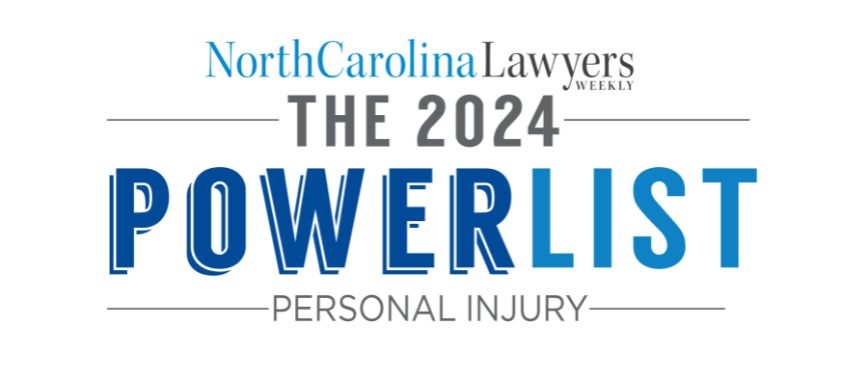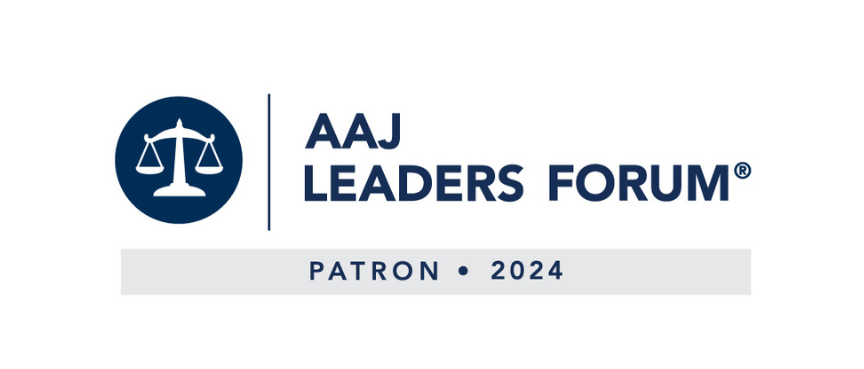I. Introduction
One of the most critical phases of auto-related litigation is the deposition of the defendant driver. A well planned, properly executed deposition can greatly enhance the chance of successfully concluding any personal injury case arising from a motor vehicle collision.
This article will discuss the goals of deposing the defendant driver as well as techniques for reaching those goals. If you were harmed by a negligent driver, contact the North Carolina personal injury attorneys of Maginnis Howard. We are conveniently located across the state in Charlotte, Raleigh, and Fayetteville.
II. Why is Deposing the Defendant Driver Important?
The defendant’s deposition should be taken in any case, regardless of size, where liability remains an issue. It is recommended that the defendant driver be deposed in every case. It is certainly possible to learn about the basic facts of a case without deposing the defendant driver. However, interrogatories clearly have their limitations. With interrogatory responses no conclusions can be drawn about the effectiveness of the defendant as a witness. When interrogatories are served the responses received are essentially the defense attorney’s sanitized version of events. It may be difficult to determine if important facts have been omitted from an interrogatory answer. A deposition allows the free flow of information from he defendant to the plaintiff’s attorney without the filtering effect of the defense attorney’s influence.
III. Goals-Purpose of Deposing the Defendant Driver
There are at least three primary goals the plaintiff’s attorney should keep in mind while preparing for the deposition of the defendant driver. They are: 1) to gain information about the defendant and the facts of the case; 2) to neutralize any defenses asserted by the defendant; and 3) to avoid surprises at trial.
A. Gain Information
What type of information can we learn about the defendant by taking the deposition of the defendant driver that cannot be gained from interrogatories or other forms of discovery? First, taking a deposition enables plaintiff’s counsel to assess the overall appearance and to gauge the jury’s reaction to the defendant. Does the defendant make a good impression or a poor one? Are they physically attractive? Are there visible tattoos, body piercing, or other attributes of their appearance that may be offensive to some jurors? How do they dress? What is their demeanor? Are they friendly or aggressive? In short, is the defendant someone the jury will be inclined to like and believe? How will the jury view the defendant as compared to the plaintiff? Which is the typical juror likely to identify with?
How good a witness is the defendant? Are they articulate? Do they make good eye contact? Is the defendant able to explain their version of events in a way that is understandable and believable? Will they stick to their version of the facts when pressured or do they waiver when challenged? The appearance, demeanor and effectiveness of the defendant as a witness are certainly factors that must be considered when evaluating any case for settlement and when preparing for trial. The only way to make an accurate assessment of a defendant’s overall appearance and poise under pressure is to depose them.
I. Background Information
The defendant’s background should be carefully explored. Further, it’s important to have a complete and accurate description of the events surrounding the collision. At the end of this paper there is an outline that contains various topics to explore and suggested questions. Unfortunately, I am not able to give credit to the original author as I cannot recall where I first obtained this outline but it may have been posted on one of the ATLA list serves. It contains many useful questions and topics. I have modified the original outline to add some additional areas of questioning.
Deposing the defendant driver should include topics designed to identify other potential defendants or sources of insurance coverage. What was the purpose of the trip the defendant was making at the time of the wreck? Were they performing any errand on behalf of a business or individual? How many vehicles do they own? Are there other family members living in the household that own vehicles that are insured? Have they purchased umbrella coverage?
Always question the defendant about their observations of the plaintiff at the scene of the wreck. The defendant may prove to be a good source of information about the plaintiff’s injuries and damages. For example, in a traumatic brain injury case the defendant may establish that the plaintiff lost consciousness for a period of time or was dazed or confused following the impact. The defendant may have observed that the plaintiff was in pain or was bleeding after the collision.
Another area that should be covered is the defendant’s response to the specific allegations in the complaint. Inquire as to the factual basis for the defendant’s denial of each allegation of negligence. If requests for admission have been served and denied, inquire about the factual basis for each of those denials as well.
B. Neutralize defenses
I practice in a state that still has contributory negligence as a defense. Because contributory negligence is a complete bar to recovery, it asserted as a defense in almost every motor vehicle case, including rear end collisions. For example, in a recent case where the defendant ran into the rear of the plaintiff’s car at a traffic light the defendant alleged that the plaintiff was contributorily negligent because he “failed to warn” her that he was going to stop when the traffic light turned yellow. Many times the individual defendant is unaware of the insurer’s defense strategies.
In my experience it is not unusual for a defendant to express surprise that there is a claim that the plaintiff is somehow to blame for what occurred. I will often ask the defendant: “Tell me in your own words why this wreck is the plaintiff’s fault” or “Explain the factual basis for your claim that the plaintiff failed to keep a proper lookout.” I go through each defense asserted in the answer and ask the defendant to explain the factual basis for that defense. A typical response is “I don’t know” or “I never said the plaintiff caused this wreck.” The deposition can then be used in support of a motion to strike the defenses from the answer.
C. Avoid surprises at trial
No one likes surprises at trial. Avoiding unexpected surprises at trial should be a priority at every deposition. It is essential to explore the facts of the wreck and the events leading up to it thoroughly at deposition. Begin with broad based questions such as “Tell me what you remember about the scene of the wreck” and then narrow the focus to insure no details are missed. Follow up detailed questions with another broad question such as: “Have we talked about everything you can remember about the events at the scene of the wreck?”
It is essential that every interaction the defendant had with the plaintiff be covered thoroughly. Make sure that all conversations with the plaintiff are recounted in detail. “Tell me the exact words you recall the plaintiff said to you when you first spoke with her after the wreck.”
III. Technique
A. Develop your own style
Like most aspects of litigation, it is essential to develop your own deposition style. Some attorneys prefer an aggressive, confrontational style to deposition questioning while others prefer a more friendly, conversational approach. I believe that the style of questioning depends on the nature of the deponent and the facts of the case. I tend to use the aggressive, confrontational approach when the deponent is a young man for instance. If deposing an older woman, I recommend a softer, more conversational style. The more egregious the facts, the more aggressive I would be with the deponent.
Some attorneys prefer to begin with an explanation of the deposition process and then a series of easy questions to establish rapport with the witness. Their goal is to get the witness as comfortable as possible with the hope that the witness will be more forthcoming with information if they are comfortable with the process and like the questioner. This approach works well with some witnesses.
I. Alternative Styles
An alternative style is to hit the witness with the hardest questions you can think of right from the beginning. The goal is to gain as many concessions or admissions from the witness as possible before they become comfortable with the process. In most motor vehicle cases the defendant driver will be sitting for their first deposition. They tend to be nervous about the process. They are afraid of what they may be asked. In my opinion, the witness will be more likely to reveal damaging information or make key concessions while they are still figuring out how the process works. In cases with disputed liability, I try to hit the witness hard with the first question. “Why did your car collide with the plaintiff’s?” “It is true isn’t it, that there was nothing the plaintiff could have done to avoid this wreck and that it was your fault?”
B. Have a plan
It is important to have a plan at the outset of the deposition. You must plan carefully to ensure you obtain all valuable information. Make a check list of important facts you want to establish, admissions you want to obtain or key areas that you need to explore. In some instances it is appropriate to write out specific questions you wish to ask. If you do write out all of the deposition questions in advance be careful not to get too dependent on the list.
I generally do not proceed in chronological order when deposing a defendant driver. I jump from topic to topic in an attempt to flustered or confuse the defendant. “Where were you going when the wreck happened? How many vehicles do you own? It is true, is it not that you were traveling 65 mph in a 55 speed zone when the wreck occurred? Where do you work?” etc.
C. Do not blindly follow the plan
While it is important to have a plan at the outset of the deposition it is equally important to recognize when to abandon the script. Do not become so tied to the list of questions that you fail to listen to witness’ answers and to follow-up when appropriate! The deposition may take unexpected twists or turns. Follow those unexpected changes when necessary.
D. Use video
Video tape the deposition. Reading a transcript at trial is no substitute for having the jurors see it for themselves. In addition, some witnesses will become nervous when the camera is on. When nervous, they are more likely to make mistakes and provide useful information. I simply take a video camera to the deposition, set it up on a tripod, push the record button and let it run. In addition, I place a remote omnidirectional microphone on the table in front of the witness for the sound. I have had very good success with this simple, inexpensive set up.
There are many uses for the video. It can be synchronized with the typed transcript for easy editing and use in trial. It can also be used as part of a mediation presentation, video settlement brochure or shown to a focus group.
IV. Conclusion
With careful preparation, proper technique and a well thought out plan the deposition of the defendant driver can be the difference between success and failure in a motor vehicle collision case. The benefits of deposing the defendant driver easily outweighs the costs. Any case worth the time, expense and effort required for a jury trial certainly justifies the small additional cost of obtaining the defendant driver’s deposition.
DEFENDANT DRIVER DEPOSITION QUESTIONS
I. DEFENDANT – Identifying Information
- Full Name
- Nicknames and aliases
- Current Address
- Length of Residence
- Prior addresses for 10 years
- Length of residencies
- Renting, Paid for, Buying
- Residence address at time of wreck
- Any secondary addresses? Explain.
- Age in Years
- Birth date
- Place of Birth
- Are you registered to vote?
- Social Security Number?
- Driver’s license State and Number
- Height, Weight
- Identifying scarring
- Describe your interests in sports and hobbies
- Has this wreck restricted those sports/activities, and how?
- Describe community activities and organization memberships
- Describe religious activities and organization memberships
- Describe political activities and organization memberships
- Give marital status and if married, present spouse’s full name
- Give full names and dates of divorce of previous spouses
- Names of all children and ages
- Places of employment of all emancipated children
- What is your spouse’s age?
- Where is your spouse employed?
- What is your spouse’s health condition?
II. DEFENDANT – Medical History
- Diseases previously suffered from and when
- Doctors treating these diseases
- Diseases presently suffering from
- Doctors treating these diseases
- Illnesses suffered at time of wreck
- Doctors treating illnesses
- Describe any injuries from wreck
- Doctors treating injuries
- Previous injuries which were re-injured in wreck
- Condition of eye sight
- What is your vision?
- Glasses or contact lenses
- Date of most recent eye examination
- Name of Doctor
- If you wear glasses or contact lenses were you wearing them at the time of the wreck?
- Do you have any problems with light sensitivity, color blindness or “night-blindness”?
- If so, what doctor treats or treated these conditions
- Do you wear prescription dark glasses or lenses
- If so, were you wearing dark glasses at time of wreck
- Peripheral vision
- Any difficulty in judging depth
- What is your hearing condition
- Do you wear hearing devices
- Date of most recent hearing examination or test
- Name of doctor administering test/examination
- Last seen by hearing doctor when
- Were you under the influence of alcohol or medications, either prescription or over-the-counter, at the time of wreck
- Describe medications taken, identify prescriber (doctor) name/address, reason for, and dosage taken for 24 hours prior to and up to time of wreck
III. DEFENDANT – Military background
1. Have you ever served in any branch of the service, whether active duty or reserves2. If so, what branch3. If so, dates of service4. Duties and job descriptions5. Type of discharge6. Rank at time of discharge7. Member of any military organizations
IV. DEFENDANT – Educational history
1. What is extent of education2. Where attended high school – year of graduation3. Where post-high school education4. degrees5. grade point averages6. Technical or trade schools attended7. Certificates or certification in what trades
V. DEFENDANT – Employment Background
1. Present Employment and salary2. Length of employment3. Duties and job description4. If disabled, what is disability and when disabled5. Previous employments for 5 years6. Duties and job descriptions.7. Reasons for termination8. workman’s compensation claims made9. Dispositions of claims made
VI. DEFENDANT – Financial Status
1. Have you ever filed bankruptcy? What Chapter? When?2. Name of attorney who handled3. Do you file income tax returns each year? If not, why?4. Salary as of end of last calender year5. Describe financial losses resulting from this wreck
VII. DEFENDANT – Criminal history
1. Any convictions for felony or misdemeanor violations?2. Dates, Courts, dispositions3. traffic violations4. Dates, dispositions5. Have you ever been imprisoned?6. When, where, what for and how long?7. Are you on probation?8. have you ever been on probation?9. describe why and when10. have you ever been on parole?11. describe why and when
VIII. DEFENDANT – Vehicle information
- Describe all vehicles owned by you or in your household
- Describe vehicle involved in wreck
- Vehicle license number
- Describe damage to your vehicle from wreck and cost to repair
- Number of years licensed to operate vehicles
- Type of license: restricted, provisional
- Date of expiration of driver’s license
- Types of vehicles you are authorized to operate
- Any suspensions or revocation of your driving privileges?
- If so, when and why
- Describe driving violations for past 5 years
- Describe previous driving experience (i.e., driver education, special courses, driving schools, and when first obtained license to drive
IX. DEFENDANT – Prior accidents
- Describe prior automobile accidents by dates, locations
- Circumstances of each
- Who was at fault for each?
- Did you make claim for PIP or med-pay?
- Did you make claim against insurance company?
- Was lawsuit filed?
- Disposition of all claims made arising from auto accidents
- Was personal injury involved in each – if so, describe injuries
- Was property damage involved in each – if so, describe
- Who repaired your automobile in each instance
- Have you had any automobile accidents SINCE this wreck?
- If so, describe: when, where, injuries, at-fault party, and status
- Ever filed claim for any type of personal injury?
- Ever been a party to any lawsuit?
X. DEFENDANT – Insurance information
- Name, address, policy # and policy limits of present policy of automobile liability coverage
- Has your automobile liability insurance ever been cancelled?
- If so, describe when and why
- Are there any restrictions to your automobile policy?
- When were these restrictions placed?
- Describe any incident where your automobile liability insurance policy has paid off a claim, giving dates and amounts paid and to whom paid
- Do you have an umbrella policy?
XI. DEFENDANT – Scene of wreck
A. FAMILIARITY WITH SCENE OF WRECK
- Are you familiar with the area of the wreck from personal experience?
- How often to you drive in the vicinity of the wreck?
- Do you pay particular attention to anything in particular when in that general vicinity?
- Why?
- Did you have knowledge of any dangers or dangerous conditions in the area of the wreck?
- What?
- Do you know the posted speed limit in the vicinity of the wreck?
- What was your speed?
- Describe the intersection (or immediate area) of wreck
- What was your distance from the Plaintiff just prior to the wreck?
- Were there any roadside hazards noticeable?
- Was it a divided highway?
- What was the road surface?
- What were weather conditions?
B. TRAFFIC CONTROLS
- Were there signal lights or a stop sign?
- Was the signal light functioning?
- What direction was the stop sign/stop light facing?
- Was it obscured or hidden?
- From what distance could you first observe the stop light or stop sign?
- What speed were you traveling when first observed traffic signal?
- What was the visibility of the stop sign from your position?
C. WEATHER/LIGHTING
- Was the pavement wet or dry
- Had it been raining or was it raining at time
- Was the sun shining or was the sky cloudy, hazy
- Streetlights in area if at night
- What were lighting conditions?
D. EQUIPMENT – SAFETY
- Describe all standard working equipment in vehicle
- Describe non-functioning equipment in your vehicle
- What repairs have been made to your vehicle during the past year?
- What repairs have been made to your vehicle since the wreck which were wreck-related
- What repairs have been made to your vehicle since the wreck which were NOT wreck-related?
- What maintenance has been performed on your car during the 12 months preceding the wreck?
- What maintenance has been performed on your car since the wreck?
- Were your headlights working at time of wreck?
- Were your headlights in use at time of wreck?
- Was your horn in working order at time of wreck?
- Did you use your horn in the wreck?
- Were your signal indicators and lights working at the time of the wreck?
- Did you use your signal indicators and lights?
E. POINT OF DESTINATION AT TIME OF WRECK
- Describe your starting time, destination, stops made, route taken prior to the wreck
- Describe the amount of traffic on the road at the time of the wreck
- What time did the wreck occur?
- What direction were you headed?
- What was you initial traveling speed?
- What lane were you traveling in?
- What was the purpose of your trip?
- Where you engaged in any activity on behalf of a business or other individual?
F. OTHER OCCUPANTS
- Name, age and address of other occupants
- Injuries of other occupants
- Purpose of passengers being in your vehicle
- Rushing to appointed destination?
- Conversations within automobile prior to wreck
- Each passenger’s location within vehicle
- Did any passenger interfere with your ability to drive or to pay attention
- Were seat belts or other restraints in operative order
- Were seat belts used by all passengers and driver
- Did any passenger complain about the manner in which you were operating vehicle?
G. CONVERSATIONS AT SCENE OF WRECK
- What conversations did you engage in immediately after the wreck and with whom?
- What conversations did you overhear at the scene and by whom?
H. CONDUCT AND ACTIONS PRIOR TO WRECK
- Describe your conduct and actions taken from the time you first saw the Plaintiff’s vehicle until impact
- Did you accelerate or decelerate just prior to impact?
- Did you change your course just prior to impact?
- Did you shift just prior to impact? What gear?
- Did you move forward or in reverse just prior to impact
- Did you brake before, during or after impact
- Did you change lanes just prior to impact
- Did you turn just prior to impact – in what direction?
- Did you cross the intersection just prior to impact
- Did you merge in traffic just prior to impact
- What are the reasons for the foregoing actions and conduct
- If you applied brakes just prior to impact,
- did your brakes grab or pull from side to side?
- If so, to which side
- Did your brakes drag
- Did you experience soft, spongy pedal action
- Did the brakes hold
- What was your distance from the collision when you applied brakes
- What was the immediate result of your application of brakes
- Did your vehicle leave skid marks
- Estimation of length of skid marks
- Did any other vehicle leave skid marks
- Estimation of length of skid marks
- After you stopped following impact what was your vehicle’s position?
- What direction was each vehicle involved in the collision facing after impact?
- Were any of the involved vehicles touching? If so, which vehicles and describe contact
I. ACTIVITIES IN VEHICLE PRIOR TO WRECK
- Was the radio on?
- Were you adjusting the controls prior to wreck?
- Did you have a cell phone in your vehicle at the time of the wreck?
- Were you using your cell phone at the time of the wreck?
J. IMPACT/WRECK SCENE
- How would you describe impact
- Did you air bag deploy?
- Did you observe skid marks at scene?
- Describe damage to plaintiff’s car
- How far did vehicles travel after impact?
- What did you do immediately after the impact?
XII. DEFENDANT–conduct and actions after wreck
- When did you contact your insurance company?
- What did you tell them?
- Did you give a recorded statement?
- Did they ask who was at fault?
- What did you tell them?
- Did you ever contact the Plaintiff after the wreck?
- Have you given statement to anyone?
- Have you ever seen the police report? Do you agree with its contents?






